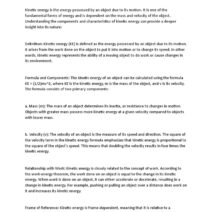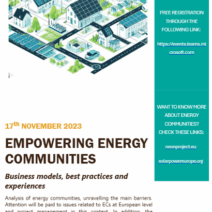The subtle yet profound influence of wind on our climate is often overlooked, with many choosing to disregard its transformative potential. Wind is not merely an atmospheric phenomenon; it is a formidable force capable of reshaping landscapes, altering weather patterns, and driving the renewable energy sector towards a sustainable future. Understanding the intricate role wind plays in both natural ecosystems and human endeavors is crucial for comprehending the broader narratives surrounding climate change and sustainability.
Wind energy, harnessed through turbines, is one of the fastest-growing renewable energy sources worldwide. As countries strive to mitigate the adverse effects of fossil fuel consumption, wind power has emerged as a viable solution. The technology harnesses kinetic energy from wind currents, converting it into electricity. This process not only reduces greenhouse gas emissions but also lessens our dependence on finite resources. By employing wind farms, nations can significantly curtail their carbon footprints, leading to a healthier planet.
There are various types of wind energy systems, each designed to maximize efficiency based on geographical and meteorological conditions. Two primary categories are horizontal-axis wind turbines (HAWT) and vertical-axis wind turbines (VAWT). HAWTs are the more prevalent type, typically characterized by their large blades and a rotor that turns on a horizontal axis. They are usually positioned high above the ground to capitalize on stronger winds at altitude.
In contrast, VAWTs showcase a different design. With blades that rotate on a vertical axis, they are less affected by wind direction and can therefore be situated closer to the ground. While not as widely adopted, VAWTs are gaining traction in urban settings where space is a premium. Their compact nature makes them suitable for powering homes and small businesses without the need for expansive land areas.
Wind energy has significant advantages over other forms of renewable energy. One of the most compelling attributes is its cost-effectiveness. Advances in technology have reduced the costs associated with manufacturing and installing wind turbines. In many regions, wind power is now cheaper than coal and natural gas, allowing it to compete on an equal playing field. This economic viability is a driving force behind increased wind energy adoption worldwide.
Moreover, the environmental benefits of wind energy are substantial. Unlike fossil fuels, wind-generated electricity does not produce harmful emissions that contribute to global warming or air pollution. This means that as wind energy adoption increases, there is a corresponding decrease in health issues associated with air quality, such as respiratory illnesses and cardiovascular diseases. Communities living near wind farms often report improved air quality and a healthier environment, further cementing the case for transitioning to wind power.
However, it’s essential to address misconceptions surrounding wind energy. Some critics argue that wind turbines pose threats to wildlife, particularly birds and bats, which can collide with the turbines. While this is a valid concern, extensive research has demonstrated that the overall impact of wind energy on wildlife is significantly lower than that of fossil fuel extraction and combustion. In conservation efforts, strategies such as siting turbines in areas with lower wildlife activity and implementing technology to detect approaching fauna are being refined to mitigate these risks.
Wind energy’s influence extends beyond environmental advantages; it fosters economic growth as well. In rural areas, wind farms can stimulate local economies by creating jobs in construction, maintenance, and operations. Moreover, they often provide a stable income stream for farmers and landowners who lease their land for turbine placement. This mutually beneficial arrangement not only sustains farms but revitalizes communities by injecting funds into local infrastructure and services.
The role of wind in influencing climate patterns is also significant. Large-scale wind currents, known as jet streams, guide weather systems across the globe. These streams are generated by the uneven heating of the Earth’s surface and the rotation of the planet. Consequently, understanding and predicting shifts in wind patterns can lead to better preparation against extreme weather events. Enhanced forecasting models that incorporate wind dynamics can improve responses to hurricanes, droughts, and other phenomena exacerbated by climate change.
While wind energy is not a panacea for all climate-related challenges, it plays an integral part in the multifaceted approach needed to combat climate change. Energy generation must diversify, yet wind power stands out due to its scalability and sustainable nature. For instance, offshore wind farms can harness the robust winds found at sea, expanding energy production beyond terrestrial limitations.
The integration of wind energy within the larger context of the energy grid is vital. The intermittence of wind power necessitates improvements in energy storage technologies. As battery systems advance, they will allow for the storage of excess energy generated during windy periods, ensuring a consistent power supply during calm days. This innovation will bridge the gap in reliability and further solidify wind energy’s position as a cornerstone of future energy solutions.
In conclusion, the influence of wind extends far beyond the gusts one might feel on a breezy day. It is a climate-shifting force with the potential to revolutionize energy production and ease the transition from fossil fuels to renewable sources. As society grapples with the undeniable implications of climate change, embracing the power of wind is not merely an option—it’s a necessity. The invisible forces at play in our atmosphere hold the key to a more sustainable future, illuminating the path forward for generations to come.






